Features of planting thuja along the fence
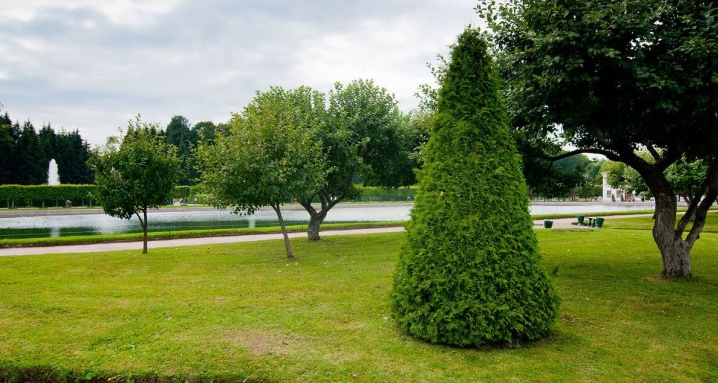
Thuja is an evergreen and unpretentious beauty that is great for decorating any garden plot. Also, the tree acts as a universal fence. Planting a thuja along the fence is a simple matter. The main thing is to decide on the composition and follow the presented scheme step by step.
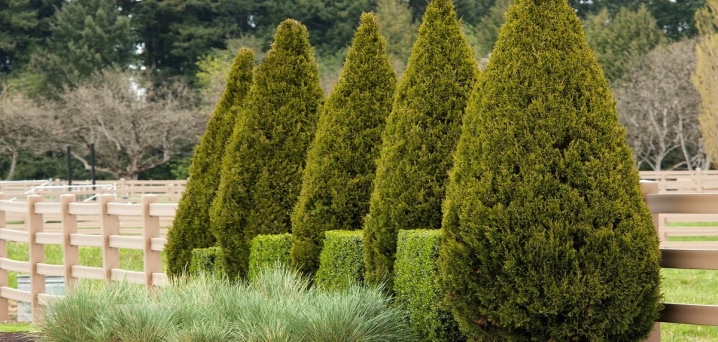
About the plant
Tuyu belongs to the genus of conifers, which make up the cypress family. The plant with soft needles and well-developed branches has a chic appearance and exudes an amazing aroma. Evergreen shrubs are capable of creating a hedge up to 15-20 meters high. There are a lot of design ideas: from a simple fence to original living sculptures. The tree is easy to cut and is durable. With proper care, thuja grows and develops for more than 50 years. Also, the evergreen beauty cleans the air of gases and dust, and its amazing aroma gives a person a positive charge for the whole day. Nice and useful!

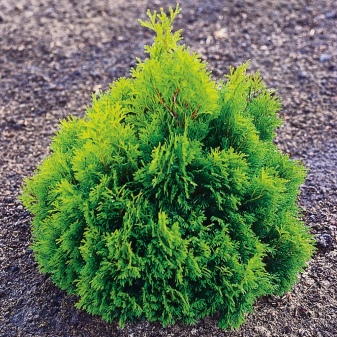
Which varieties should you choose?
To create a thuja hedge in the country, the varieties "brabant" and "smaragd" are suitable. These western thuja varieties have a number of advantages.
- Brabant. A fast growing, undemanding plant ideal for hedges. Differs in a massive cone with a slope into the column. This variety is known for its high frost resistance and unpretentious care. Brabant is notable for its rapid growth, and in a couple of years the height of a living fence will be 4-5 meters. Frequent trimming during the spring and summer seasons will improve the appearance of the trees. The needles will become lush and thicker.
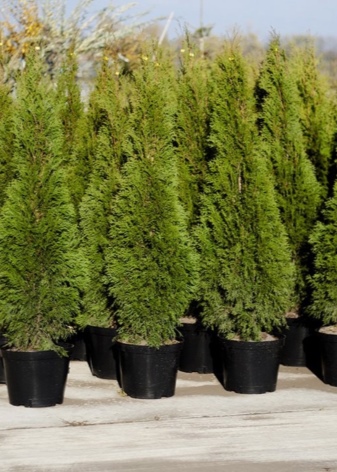
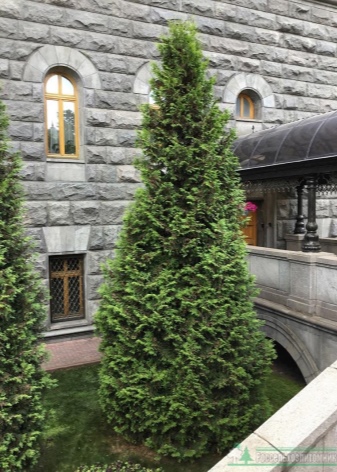
- Emerald. This variety of thuja has a cone shape with dense, smooth needles. Like brabant, the tree is unpretentious in maintenance and has excellent frost resistance. However, the growth of thuja emeralds is rather slow. Therefore, it will take a long time to create a tall hedge.
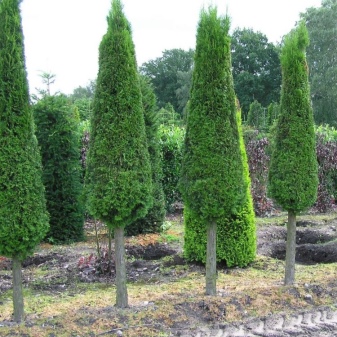
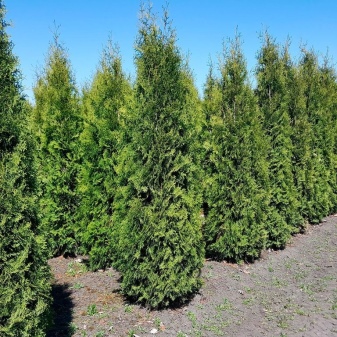
In addition to Western varieties, conical thuja varieties - "Columna" and "Yellow Spiralis" are suitable for creating an unformed green hedge. As for the miniature low bushes, the Golden Globe and Little Champion are perfect for the "green fence". Western varieties can also be planted in groups and on flower beds in combination with folded thuja.
Distance
A beautiful hedge can be created in the courtyard of a private house or in the country. By law, trees should be planted 3-5 meters from the dwelling and 1 meter from the main fence. With regard to the formation of the composition of thuja, the distance in the hedges is adapted to the size of adult plants. When creating a hedge from conical and columnar thujas, trees are planted at a distance of 1 running meter. For slowly growing western varieties, a space of 60 cm is required. Fast-growing folded thuja are planted at a distance of 90 cm. For a two-row hedge, it is 2 meters. In this case, seedlings are planted in a checkerboard pattern. When choosing the largest varieties of thuja, plants are placed at a distance of up to 5 meters from each other. The soil can be any.
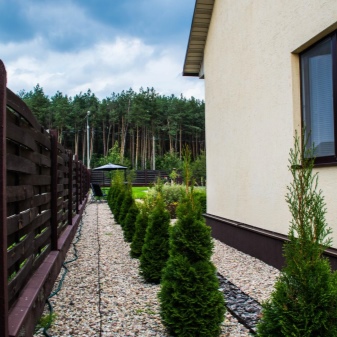
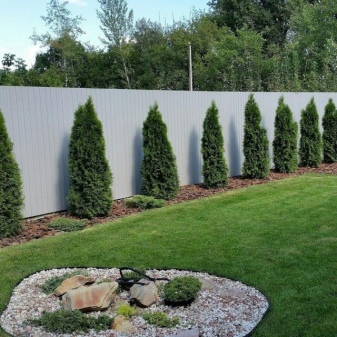
Note that an important point when planting seedlings is their condition. Young, healthy trees with a strong root system are suitable for creating the right “green fence”. For group planting, you should not take copies smaller and weaker than the rest. Otherwise, the hedge will look ridiculous.
Planting scheme and care
Evergreen shrubs will protect the private courtyard not only from prying eyes, but also from dust and noise. The hedge itself of the thuja will delimit the site into zones, and the undersized shrubs will act as the basis for the curbs. The scheme of planting compositions from thuja (in the spring) is as follows:
- seedlings are planted in a pre-dug trench (at least 1 meter deep);
- we remove the cover from the roots directly in the pit;
- we make sure that the root collar is flush with the soil, otherwise the thuja can dry out;
- we fill the roots with a mixture of peat with earth or special soil;
- we trample the ground around the seedlings so that there are no voids;
- water the planted trees abundantly.
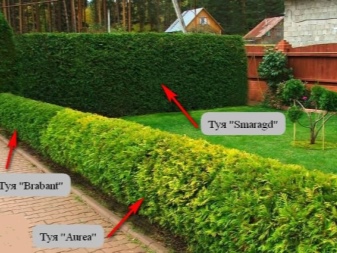
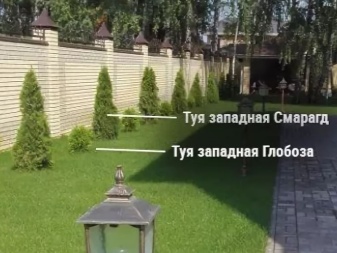
Many gardeners believe that thuja hedges will grow without additional maintenance. This opinion is wrong! For a group planting of a thuja, careful control is necessary. Trees need regular shedding and pruning. It is enough to moisten a hedge of young trees 1-2 times a week. In the sultry summer, the procedure is performed more often. At first, young seedlings are closed from direct sunlight until they get stronger.
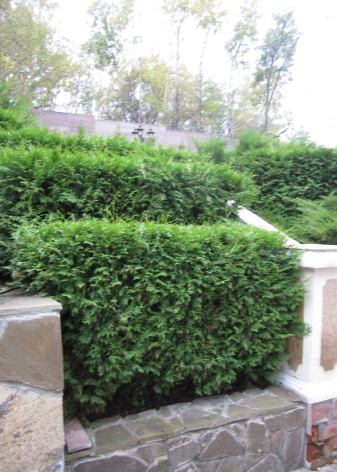
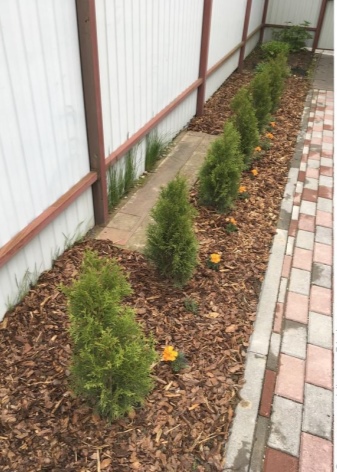
Trees are pruned in autumn or spring. Dry branches are removed from the plant and a crown is formed. Branches of shrubs, planted in groups, do not grow to incredible sizes. Therefore, pruning should be minimal and neat. Also, a month after planting, the soil near the seedlings must be mulched and fertilized every spring. If after a couple of years the gardener sees that the thuja are planted too tightly, then they can be easily transplanted. Evergreens tolerate this procedure very well.
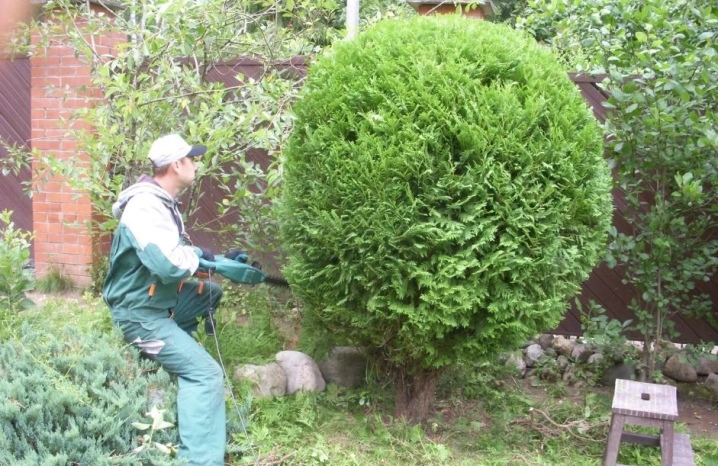
Ideas
Tui are at the forefront of landscape designers. As a rule, in summer cottages, a hedge of evergreen beauties is created along the fence. The composition of thujas in a checkerboard pattern looks great, while western thujas are combined with conical varieties. Thuja in the form of animals or geometric shapes are suitable for a private house. (balls, pyramids). You can do such a work of art yourself or use the services of a professional. In addition, thuja go well with spruces and other decorative flowering shrubs. In addition to hedges, evergreen trees are used to create curbs and arches.

Sometimes the appearance of a hedge can deteriorate. The fact is that thuja needles tend to turn yellow. This signals a sunburn, lack or excess of moisture, fungal diseases or pest attacks.
For information on how to plant thuja along the fence, see the next video.



































































The comment was sent successfully.